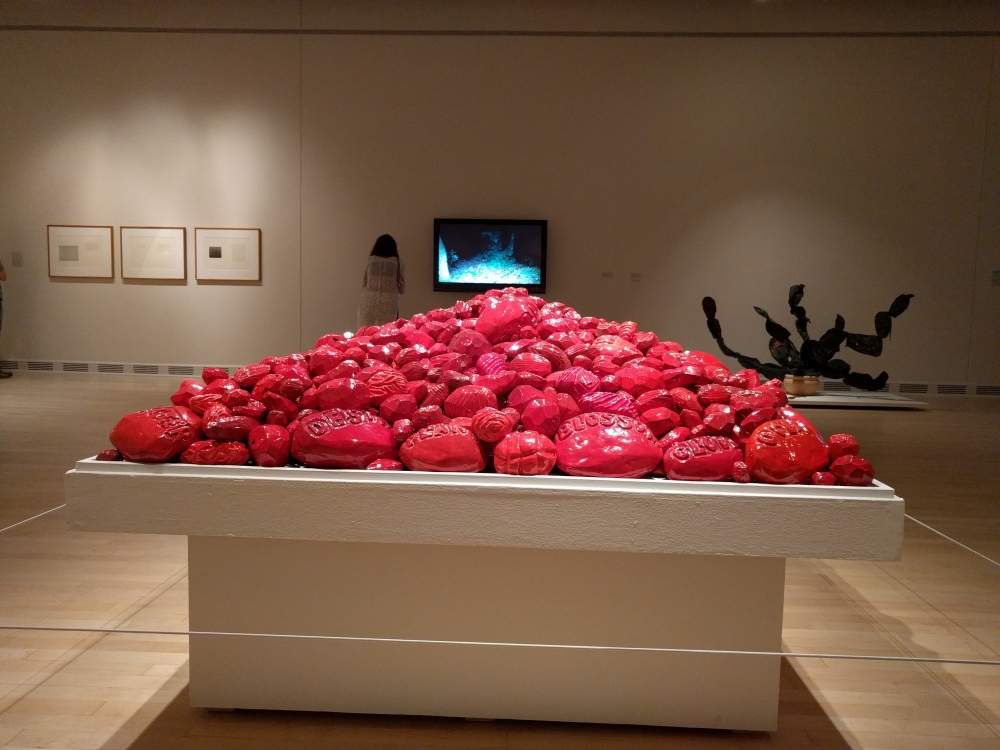ASU's latest art exhibit, the New Animist, sits just below the scalding concrete surface of Mill Avenue in a well-ventilated gallery in the university's climate-controlled art museum — a fitting time and place for an exhibit about climate change.
On display since July 16, the exhibit lands squarely in the hottest chunk of the year and seeks to address the environmental issues the planet faces through an artistic lens.
2015 was the hottest year on record, and the New Animist looks to make visitors aware of that issue and others the planet faces.
"(The show) peripherally discusses problems like overmining and excessive deforestation, there are some things that suggest being more respectful to our water," the show's curator, Kev Nemelka said.
"Whether people actually accept the philosophy of new animism is kind of up to them, but I hope that it starts conversations about how we use things around us, and whether we can use them more sparingly or a little more intelligently."
This is the repeated theme throughout the exhibit. Each work seeks to remind visitors that, as a part of nature, they should care about nature's problems.
"There's a piece right in the center that talks about environmental change," ASU art museum employee Garrhett Kidd said. "You'll see all these pieces of clay sculpture, they kind of look like jewels, and you'll see that they have words on them: environmentalism, ocean, litter."
The exhibit explores other ways to remind visitors of the importance of environmentalism. In the far right corner of the room stands a large replica of a lotus flower.
"They are sentient enough to open themselves up and regulate their temperature, and it's something I've never even considered," Kidd said.
In fact, a study by Dr. Paul Schultze-Motel and Dr. Roger S. Seymour of the University of Adelaide found that lotus flowers were able to maintain an internal temperature as high as 95 degrees Fahrenheit when immersed in a 50 degree environment.
"It speaks to that philosophy of things being alive in a way that humans can't really understand," Kidd said.
By displaying qualities humans share with the rest of nature, the show hopes visitors at least begin this process of understanding the world around them.
In this sense, the New Animist takes a different approach than many when trying to address climate change. Rather than focus on how the changes will affect humankind, the exhibit shows how the ambient environment has a life of its own and that it's worth protecting.
This all ties back to a term echoed throughout the show: posthumanism, an ideology that shifts man from the center of the biological realm to a niche, on even ground with the rest of nature.
To some, however, the intent of the New Animist is not so clear.
"If anything, they're probably using up more resources than raising awareness," museum visitor Preston Marshall said.
Nemelka noted this apparent hypocrisy and offered his own reasoning.
"There's a writer named T.J. Demos, who talks about how even though art shows like this are themselves unsustainable, we still need these kinds of shows because without awareness we'll never really get to the solution," Nemelka said.
The New Animist will showcase its approach to environmental conservation until September 3.
Reach the reporter at sdeadric@asu.edu or follow @deadrick_sam on Twitter.
Like The State Press on Facebook and follow @statepress on Twitter.





